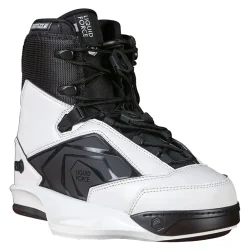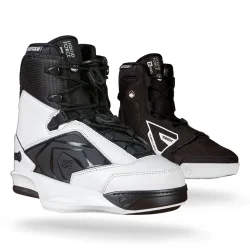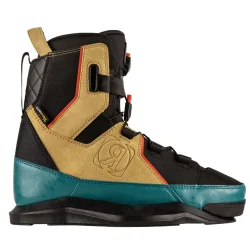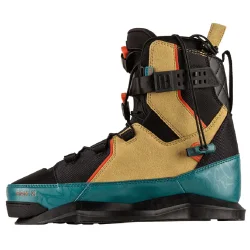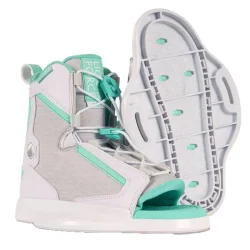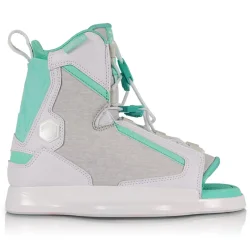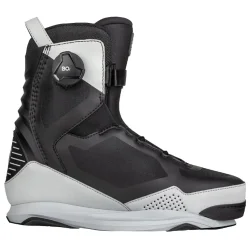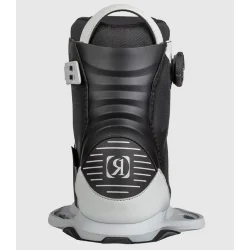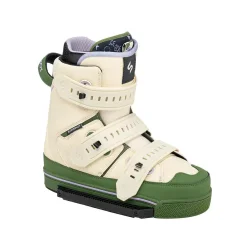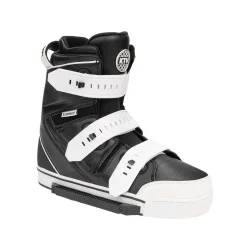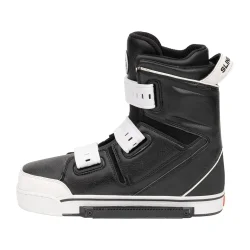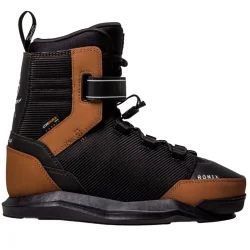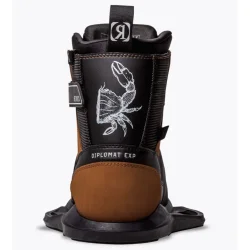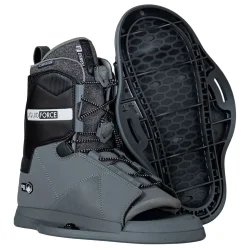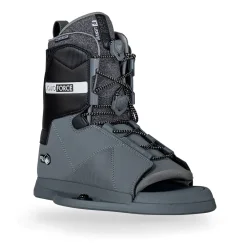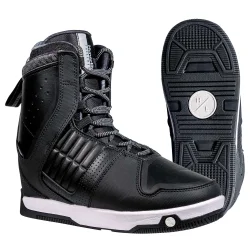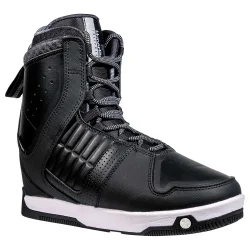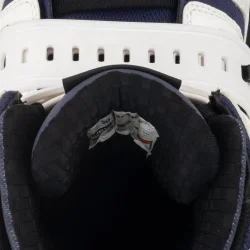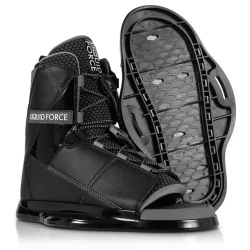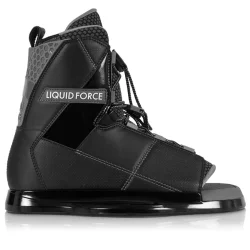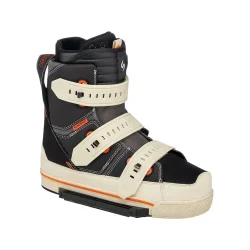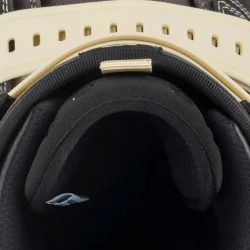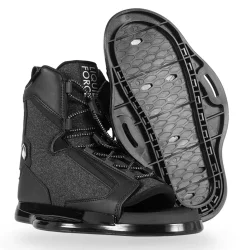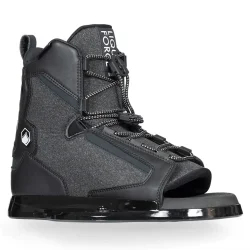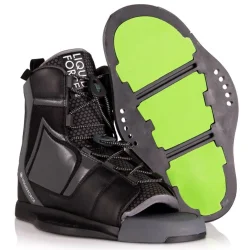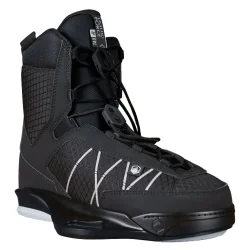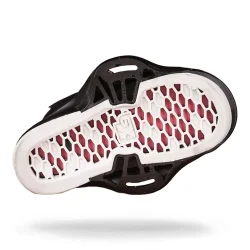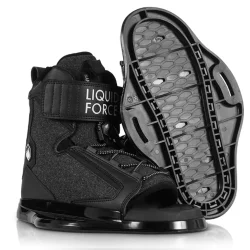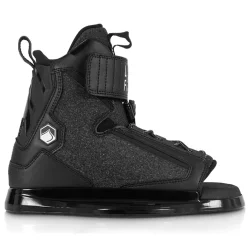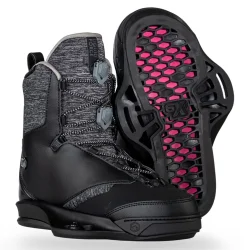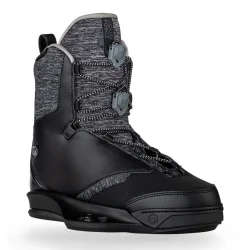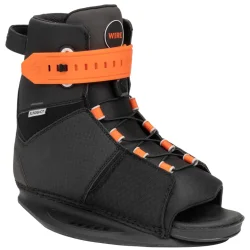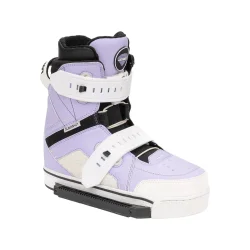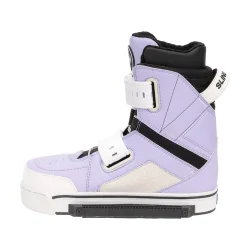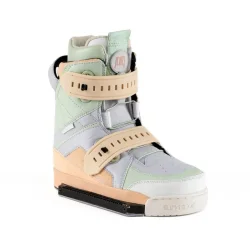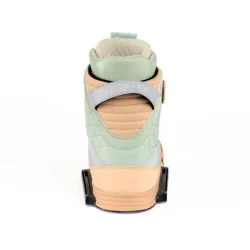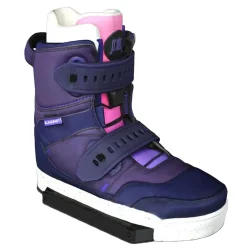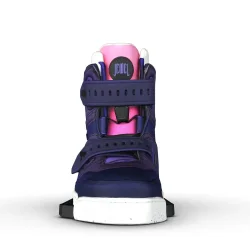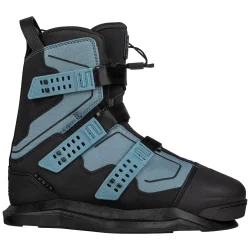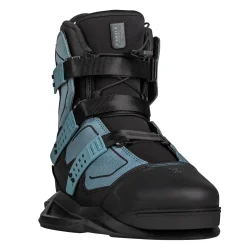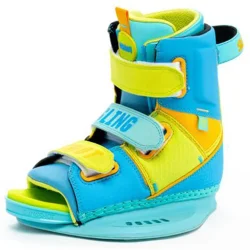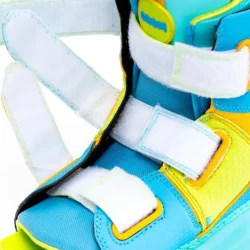How to Choose the Right Wakeboard Bindings ,
When you’re starting out (or even if you’ve been riding for a while), it’s easy to think the board does all the work. But a poorly chosen pair of bindings can lead to discomfort, repeated wipeouts, or shortened sessions. We’ll help you make sense of it all so you can choose the wakeboard bindings that are right for you!
Types of Wakeboard Bindings
Wakeboard bindings are divided into two main categories: open bindings and closed bindings. What’s the difference?
- Open Bindings
Ideal for beginners because they are less rigid and more forgiving.
Great if you want to share your gear with a friend, as they can adjust to multiple sizes.
- Closed Bindings
Perfect for intermediate to expert riders. Resemble a real shoe and are essential for park riding on modules, offering better foot protection in case of impact. Provide better support and comfort, ideal for progressing or frequent riding.
Summary: Open for beginners, closed for performance and progression!
Choosing the Right Flex
Like in skiing, the flex of the binding should match your skill level.
-
Soft Flex: More forgiving for beginners and park features.
-
Stiff Flex: Offers better board response, intended for advanced riders.
Generally, stiff bindings are best for experienced riders, while beginners benefit from a softer, more forgiving binding. Adventurous riders can try the Hyperlite System, which functions like a snowboard binding, providing exceptional support and precision for big tricks in cable parks.
Binding Mounting System
There are two main mounting systems:
- Classic:
- Screwed directly onto the board.
- Simple and effective.
- Système à plaque
- “Two-piece” systems (like Slingshot KTV or RAD)
- Provide more flex and shock absorption.
- More comfortable on park modules.
Closure System
- Laces
- Velcro straps
- BOA system
If you’re doing multiple runs, choose bindings that are easy to put on.
- Velcro can release during a hard fall.
- The tighter the closure, the more support, but it can take longer to put on.
Binding Height
- High bindings : More support, less flexibility, ideal for wakeparks.
- Low bindings : More freedom for tricks, ideal for boat wakeboarding.
Your Riding Style: Cable or Boat
- Cable: Prefer bindings with more flex for modules and rails.
- Boat: Look for more support and stiffness to handle jumps and maintain control.
Frequently Asked Questions :
What size bindings should I choose?
Take your normal shoe size. If between sizes, go slightly snug.
Do bindings stretch?
A little. The internal foam compresses over time, so start with a well-fitted binding. Too large initially will only get worse.
How to maintain wakeboard bindings?
- Rinse with fresh water after each session.
- Dry in the shade.
- Avoid storing in humid areas.
How to mount wakeboard bindings?
Not always. Check insert compatibility (usually 6” standard), but some proprietary systems (like Hyperlite or Slingshot plate systems) need adjustments. It’s best to buy board and bindings from the same brand or ask for advice.
How to attach your wakeboard boots?
Wakeboard boots are essential for practising this sport. It is important to attach them correctly to your board to ensure your safety and comfort. There are several ways to attach wakeboard boots to your board and adjust them for the best possible fit.
Should I choose different bindings for cable or boat ?
Yes. Cable bindings often need more flex for maneuvering on modules. Boat bindings prioritize support for jumps and impacts.
How much does a good pair of bindings cost?
Around €150 for entry-level open bindings, and €300–400 for high-end closed bindings.
Can I use wakeboard bindings for kitesurf or wakeskate?
No. Wakeboard bindings are designed specifically for wakeboarding (water resistance, support, cushioning). Kitesurfing and wakeskating have different requirements (flex, pull, quick entry).



